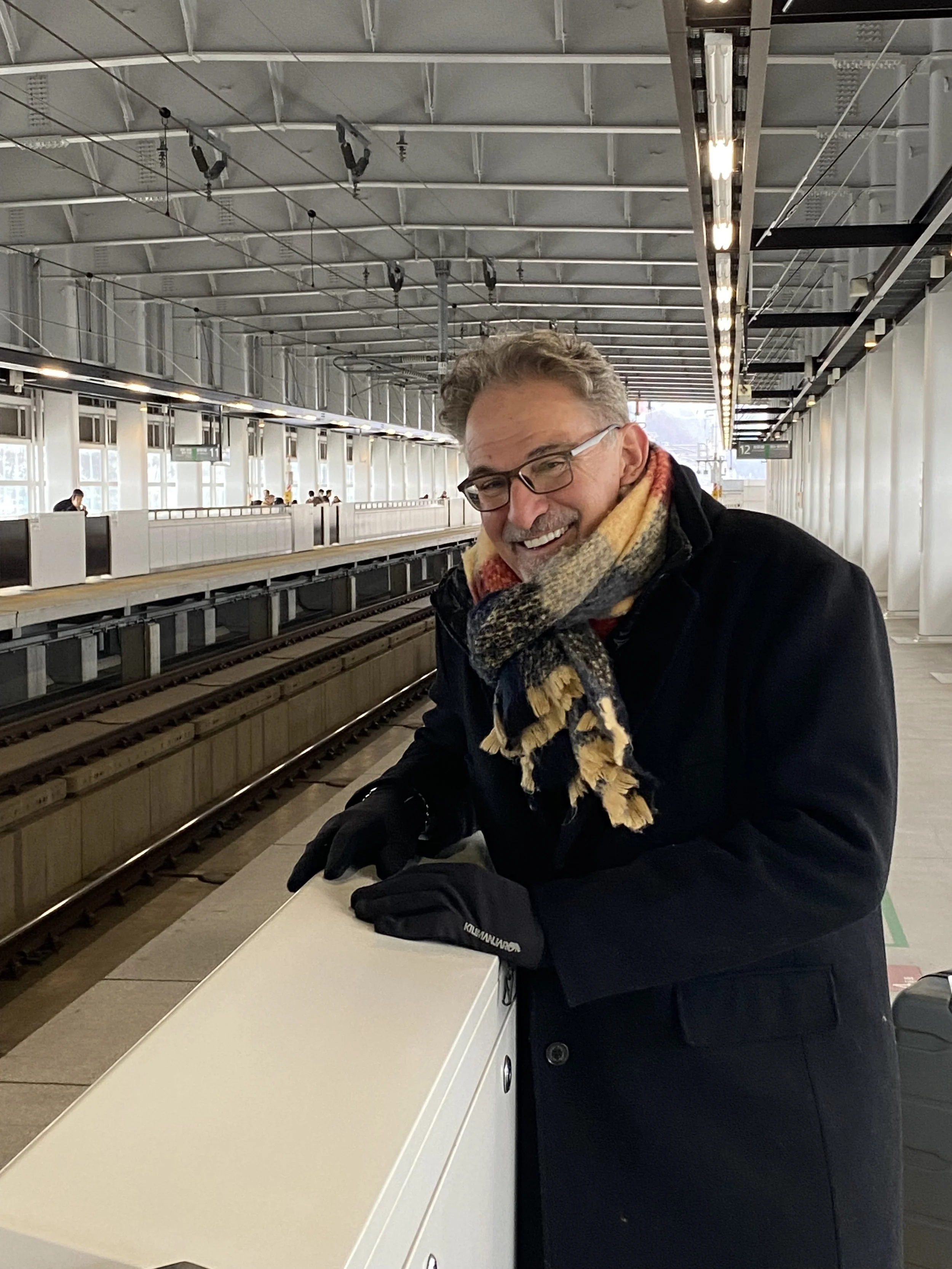
Turning Vision Into Velocity
I help founders, investors, and institutions turn complex ideas into ventures that work — when speed, scale, and adaptability are non-negotiable.
35+ countries / $500M+ impact

The Age of Intelligence
How Power, Work, and Value Are Being Rewritten
A strategic field guide for leaders building systems that scale, adapt, and endure — when the usual playbooks no longer apply.
About
A Systems Builder at the Edge of What’s Next
From telecom to oceans, I build what matters when it matters most.
I specialize in turning bold, unorthodox ideas into executable platforms — across energy, AI, sustainability, and global infrastructure.
Right now, I’m focused on unlocking ocean intelligence at scale.
What I Do
Executive & Interim Roles
Helping organizations scale, reposition, or reset — especially in moments of urgency or transition. Focused on family offices, frontier ventures, and mission-driven innovation.
Strategic Advisory & Systems Design
Partnering with founders, funds, and institutions to navigate complexity — from idea to infrastructure, from thesis to traction.
Venture Turnaround & Critical - Phase Execution
Advising or embedding into ventures that are early, off-track, or hitting structural friction.
Family Office Strategy
Working with principals and next-gen leaders to shape capital strategies around long-term value, intelligent infrastructure, and pre-institutional ideas that don’t fit the traditional mold.
Sustainability & Ocean Intelligence
Building the toolkits, partnerships, and governance models needed to operate at planetary scale — especially around ocean systems, carbon markets, and resilience.
Portfolio & Case Studies
See Select Projects
A portfolio of real-world tests - some early, some scaled, some still unfolding. Each pushed the edge of what was possible, often before the market or system was fully ready. Together, they offer insight into how meaningful innovation actually moves.
-
The Clearinghouse That Almost Didn’t Happen
✴️ BSIWS (BellSouth International Wireless Services)
Role: Conceptual Lead & Business Architect
Context
In the early 2000s, BellSouth owned a patchwork of mobile operators across Latin America — but no cohesive way to manage roaming. When a customer from Colombia showed up in Florida, we manually loaded them into local systems, tracked call data by hand, and negotiated billing later. Technically, roaming was possible — but operationally, it was chaos.
What I Did
I was asked to streamline the process. What I saw was a systems failure — and an opportunity. I built a business plan for a regional clearinghouse that could automate roaming across markets. I sourced executives from other clearing platforms, pitched the concept to HQ, and pushed through institutional resistance that couldn’t see the hub — only the spokes.
Outcome
BSIWS launched as the first roaming platform to unify BellSouth’s Latin American networks — transforming roaming from a patchwork workaround to a scalable asset. What began as back-office cleanup became a strategic advantage.
Lesson
Even well-run institutions struggle to see the system when no one’s accountable for the whole. The clearinghouse didn’t happen because of better tech — it happened because someone connected the dots. That’s what I do: build the connective tissue that lets complex systems work.
-
From Misfit to Multiplier
Company: ✴️ Infonet (Global Managed Network Services Provider)
Role: Vice President, Communication Solutions
Context
Infonet delivered global network services to Fortune 1000 clients, anchored by one of the world’s largest private IP infrastructures. But four promising business units — mobility, security, multimedia, and messaging — were buried under the dominance of the MPLS business. Internally, they were misunderstood, unsupported, and drifting toward irrelevance.
What I Did
I led the restructuring and repositioning of those units — isolating them operationally, clarifying their strategic role, and building a dedicated overlay salesforce to take them to market. Most importantly, we found ways to bundle them back into the core, making them complementary instead of competitive. This wasn’t a pivot — it was a systemic unlock.
Outcome
The lines gained traction and visibility, driving new enterprise engagement and expanding Infonet’s commercial footprint. They became a key factor in British Telecom’s acquisition, proving that what the market saw as peripheral was actually central to future growth.
Lesson
Not everything unloved is unworthy.
Sometimes, value just needs someone to make the case — and build the bridge.
-
The Model Was Right. The System Wasn’t Ready.
Company: ✴️ Griddy (U.S. Retail Energy Platform)
Role: Co-Founder, Chief Marketing & Product OfficerDescription text goes here
Context
Griddy was the first U.S. platform to offer direct access to the real-time wholesale energy price. For a flat monthly fee, customers bypassed utilities and bought power at cost — no markup, no middlemen. When the grid was oversupplied, power was free. When prices surged, they saw it coming — thanks to hourly and day-ahead forecasts with stunning accuracy. It wasn’t just a pricing tool. It gave consumers agency.
The platform worked. The product scaled. The power grid infrastructure failed. The headlines followed.
What I Did
As CMO and CPO, I helped design, build, and scale the platform — leading brand, growth, and product. We built a system that made energy visible and actionable for everyday consumers.
But our capital partners came from the traditional energy world. They weren’t builders of platforms — they were extractors of margin.
When the crisis hit, that misalignment showed.
Outcome
Griddy was forced to shut down. The platform and customer base were sold.
We were one of the first companies to collide with climate-era systems failure at scale — a working model taken down by prolonged volatility, political backlash, and institutional fragility.
Griddy didn’t collapse because the model failed. It collapsed because the infrastructure didn’t hold, sentiment turned, and customers had no way to switch off.
Lesson
The model held. The system didn’t.
Without buffers, aligned capital, or room for error, even the most tested innovations can fall first.
Griddy became an early warning: climate volatility is already testing infrastructure, and systems not built for resilience will keep breaking. That’s the lesson — and the opportunity.
-
The Platform They Couldn’t Share
Company: ✴️ Klarum (Telecom–Banking Mobile Payments)
Role: Co-Founder & Systems
Context
Klarum was an early mobile payments platform built on existing telecom and credit card infrastructure. It let people make real-time purchases using SMS and phone billing — no apps, no new hardware — just a smart way to connect systems that were already in place.
Two large institutions — a telecom (WIND) and a bank (Bankacella) — were ready to pilot the platform. But Klarum ran into a problem that had nothing to do with the technology:
there was no clear way to share control.
One viewed Klarum as a card product. The other saw it as a mobility convenience service.
Each wanted to own the customer relationship — but Klarum was designed to be a neutral platform that they and other banks and mobile operators could participate on.
When neither institution was willing to adopt that shared model — and no governance precedent existed — the deal fell apart.
What I Did
I co-founded Klarum and helped design it as a bridge between telecom and finance — anticipating the future of mobile transactions before that future had a name.
We built the platform, ran tests, and secured technical approvals. But the deeper challenge wasn’t technology — it was structure.
Klarum didn’t fail in the market. It failed in the boardroom
Outcome
The platform never launched. The capital — contingent on both institutions moving forward — disappeared when cooperation broke down.
The product worked. The system around it didn’t.
Lesson
Klarum was the right idea — but it entered the wrong system.
It proposed a shared platform model — one that multiple banks and mobile operators could participate in without needing to control it.
But the institutions involved weren’t built to collaborate that way. There was no structure for shared ownership, no playbook for co-governance, and no willingness to let go of control.
That’s what stops many early platforms — not product failure, but institutional refusal to absorb models they don’t lead.
-
The Ocean Operating System
Company: ✩️ Vital Ocean
Role: Strategic Architect & Systems AdvisorThe Situation
Marine decisions are being made with partial data, siloed institutions, and no common operating picture. Despite advances in ocean sensors, modeling, and AI, insights remained fragmented. Governance frameworks are fragmented. Real protection lacked real infrastructure.
The Opportunity
Vital Ocean emerged to change that—building a digital foundation for coordinated, data-driven ocean governance. Not just another dashboard or dataset, but an Ocean Operating System: one that could simulate ecosystems, guide planning, and align actors across boundaries.
At the heart of this is OceanIQ, a platform integrating digital twins, real-time data, and immersive visualization—and OceanGPT, an AI copilot designed by Vital Ocean collaborators to translate science into action.
My Role
I helped define the systems architecture, strategic narrative, and business alignment. My focus:
Positioning OceanIQ as foundational infrastructure, not just a tool
Bridging government, philanthropic, and frontier-tech priorities
Supporting the narrative shift from symbolic protection to enforceable, intelligent governance
The Result
Vital Ocean is an active, evolving effort—still early-stage and not yet institutionally funded, but being built through catalytic project-based work that incrementally advances its core infrastructure. Each engagement helps develop core components of the OceanIQ platform.
Early wins include:
A functioning digital twin for marine spatial planning
The development and deployment of OceanGPT, an ocean-specific AI copilot
These components are already attracting potential collaborations with small island states, marine spatial planning pilots with global NGOs, and regulatory prototyping through partnerships with coalitions like IPOS. What was once a campaign is now starting to become a planetary governance infrastructure.
Lesson
The biggest systems don’t stall because they’re unworkable — they stall because they live between institutional mandates.
Vital Ocean didn’t try to be a product or a project. It exposed the structural mismatch between what planetary governance requires and what institutions are set up to fund. Most funders still think in categories. But the ocean — like most complex systems — demands infrastructure.What changed the game wasn’t a better pitch. It was the willingness to build through use: to fund the components through real-world projects, and to let working software become working infrastructure.







